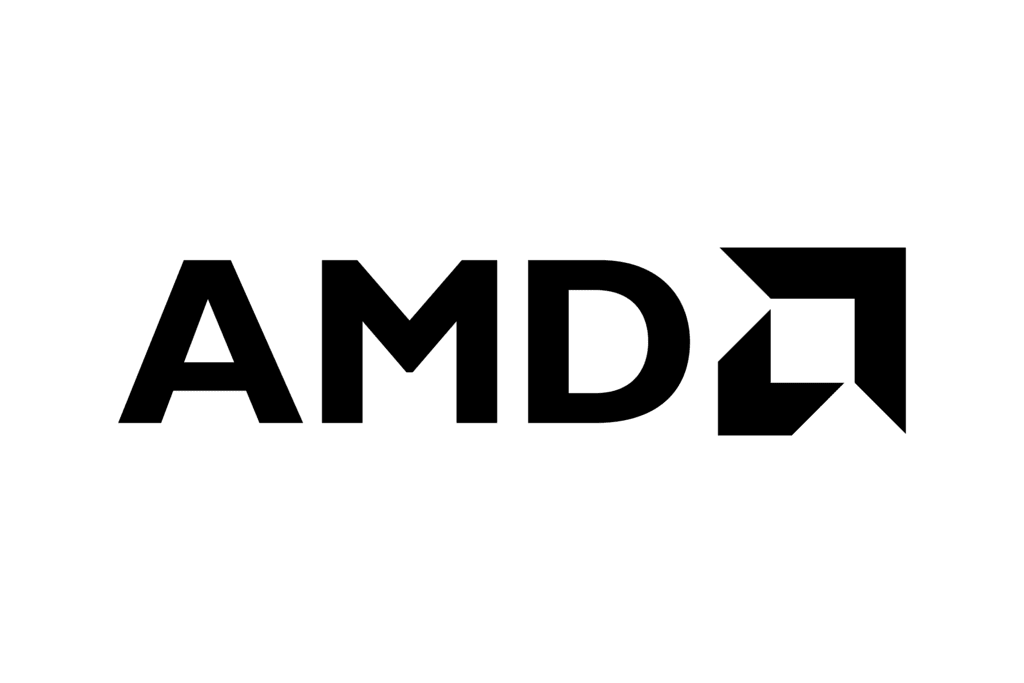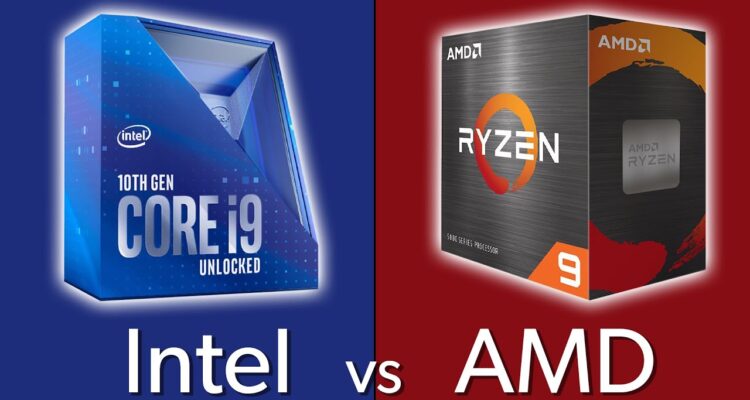Before we jump to the comparison, let’s first understand more about these two giants.

V.S.

About Intel
Intel is the world’s leading PC microprocessor manufacturer and the inventor of the x86 processing architecture.
Among the first microprocessors, the Intel 4004 was released in 1971. The x86 microprocessor family is a collection of Intel microprocessors that originated with the 80286 microprocessor. The 80286 was a 16-bit microprocessor chip that was first launched in 1982.
The 80286 launched a new series of memory-managed microprocessors. It also outperformed the 8086 and 8088 in terms of performance per clock cycle. It quickly gained popularity, and by the 1990s, it could have been found in a wide range of equipment. Intel released the 80386 (386), a 32-bit CPU, as the predecessor to the 80286, in 1985. Intel is well recognized for creating the microprocessors found in the majority of personal computers around the world. The international technological corporation is also the world’s top revenue producer of semiconductor chips, which are utilized in nearly all electronic products.
Several prominent IT businesses, like Dell, HP, and Lenovo, employ Intel microprocessors in their computers. Graphics processors, motherboard chipsets, flash memory, and other computing equipment are also made by Intel.
About AMD
AMD is a semiconductor business that specializes in creating and developing computer CPUs and graphics technologies.
AMD and Intel signed a technical cross-licensing arrangement in 1982, allowing AMD to offer second-source chips to Intel, which in turn supplied microprocessors to IBM for its new consumer PCs.
This pact expired in 1982. Intel and AMD went to court in 1991 over AMD’s Am386 CPU, which Intel claimed was too close to its 386 microprocessor. The United States Supreme Court decided in AMD’s favor in 1994. That year, Compaq signed an exclusive chip supply agreement with AMD for its computers. AMD began by retooling preexisting microprocessors as well as other things to make them quicker and more efficient, rather than developing their own. AMD is now a leading provider of CPU technology for desktop computers, servers, high-performance computing, GPU graphics technology, artificial intelligence (AI) processors, field-programmable gate array (FPGA) processors, and network accelerators thanks to its expansion and acquisitions.
Laptop processors
The majority of notebooks on the market are powered by Intel processors of various versions with integrated graphics. According to a Dell spokesperson, Intel’s portfolio is vast when compared to AMD’s, and its current laptop lineup and CPUs are superior to ever. Alder Lake powers Intel’s laptop CPUs, just as it does its desktop CPUs, so you’ll be able to buy laptops with 12th Gen CPUs in almost every sector.
Alder Lake is available in four different flavors: low-power U models, medium-power P models, and high-power H and HX models. In general, the quicker the CPU, the more power it has, but certain H and HX CPUs have fewer cores than the P CPUs. U- and P-type CPUs in thinner, slimmer laptops with a priority on long battery life, good graphics card, have overall acceptable performance. H and HX CPUs are designed specifically for gaming laptops and are frequently combined with a strong AMD or Nvidia GPU.
AMD’s Ryzen 6000 CPUs were just released, and while they’re good, they’re only able to compete in the low and middle. While Ryzen 6000 could compete with lower-power 12th-gen CPUs, it couldn’t sustain with more powerful CPUs such as the Core i7-12700H in their assessment of the Ryzen 6000 loaded Asus ROG Zephyrus G14. If you contemplate that the 12700H isn’t even Intel’s fastest mobile CPU, it’s even worse for AMD. The major challenge for AMD is that its best laptop CPUs only have eight cores, whereas Intel’s fastest laptop CPUs have 16 cores.
Desktop processors
Prior to AMD Ryzen 3000 and AMD Ryzen 5000, AMD CPUs were only the best option in the budget and entry-level segments of the market. That transformed with AMD Ryzen 3000 and AMD Ryzen 5000. While AMD has generally been a cost-effective alternative, Intel is the most cost-effective option. However, this does not imply that Intel is losing ground to AMD. In fact, the Core i9-12900KS is often recognized as the fastest processor available. For a handful of cores and energy-efficient frequency speeds, the most economical AMD or Intel CPUs will run between $40 and $60.
The best midrange CPUs cost between $200 and $350, while the finest gaming CPUs cost around $500. You can pay anywhere between $600 to almost $1000 to speed up complex operations like video processing and transcoding. For gaming and efficiency applications like video processing and transcoding, AMD and Intel have outstanding processors. However, both Intel and AMD do not have a CPU that excels at both tasks. Although Intel’s Core i9-12900KS outperforms AMD’s Ryzen 9 5950X in both productivity and gaming, AMD’s gaming-focused Ryzen 7 5800X3D is significantly faster in games.
Many budget-level CPUs, namely the Core i5-12400 and Core i3-12100, have been released by Intel in the $100-200 range. Since AMD had been neglecting the cheap category, it was very effortless for Intel to control this market with its latest 12th-gen CPUs.
AMD eventually upgraded its affordable offerings in April with CPUs like the Ryzen 5 4500 and Ryzen 5 5500. However, these CPUs have received mixed reviews due to their high price and the fact that the 4500 is based on the Zen 2 architecture, which is significantly older. In terms of future releases, AMD plans to introduce the Ryzen 7000 afterward this year, which will include AMD’s new Zen 4 architecture and TSMC’s 5nm technology. AMD hasn’t said much about Ryzen 7000, but we should expect single-core improvements, improved power efficiency, possibly higher clock speeds, and greater core counts. Because Ryzen 7000 will have a new architecture as well as a new process, we may be able to assume the same level of improvement as Ryzen 3000 in 2019.
So, yes, it is safe to say that AMD is on its way to matching up with the exceptional value offered by Intel.
Like this post? Checkout our V.S. Story Section



No Comments